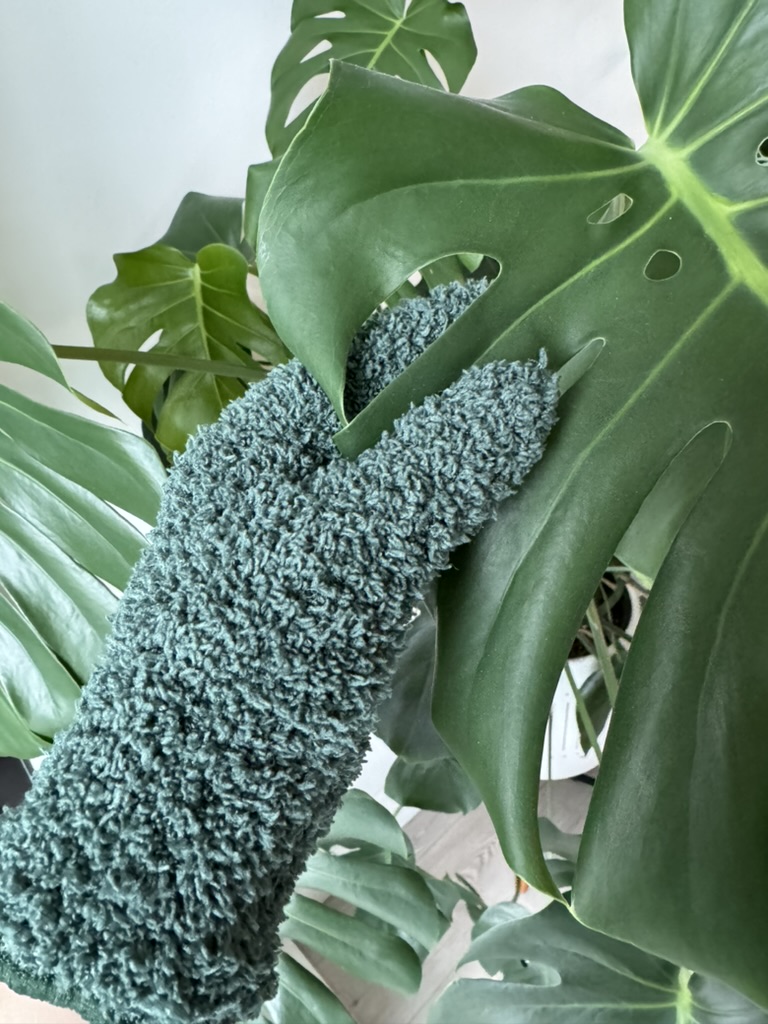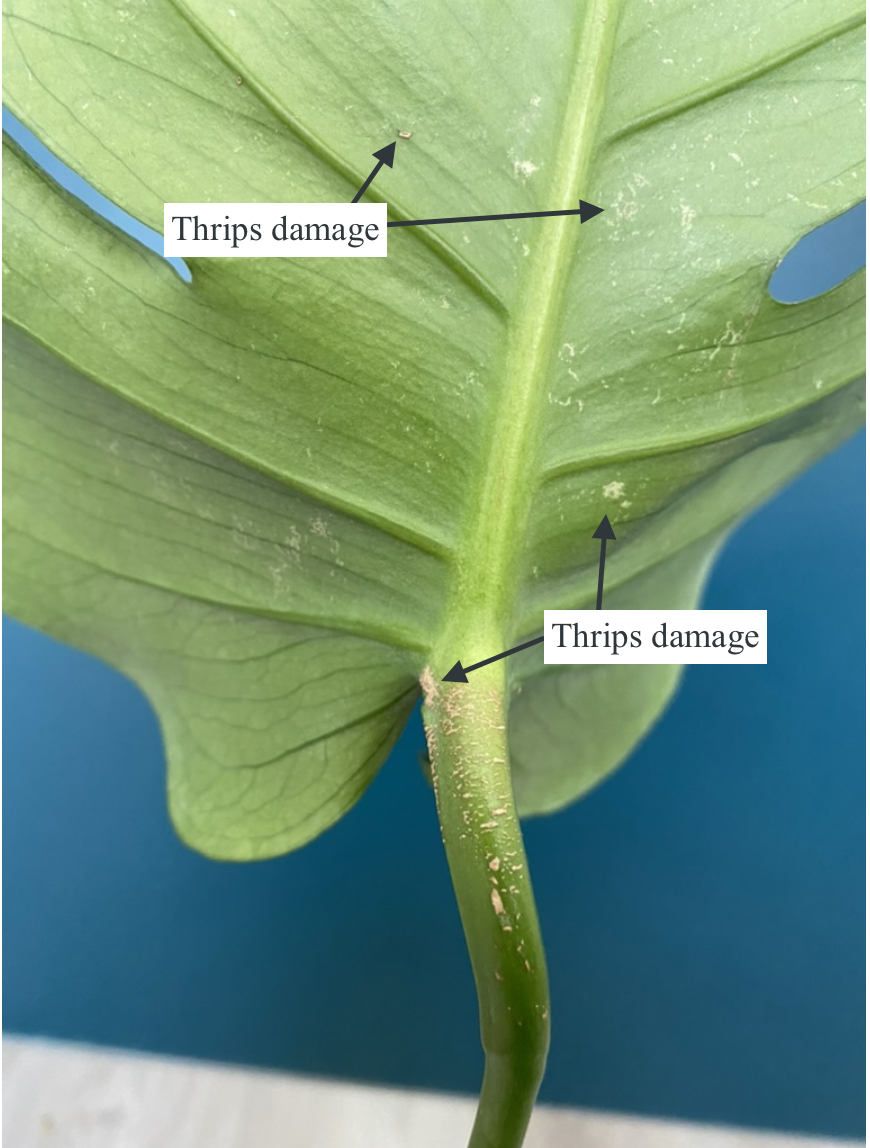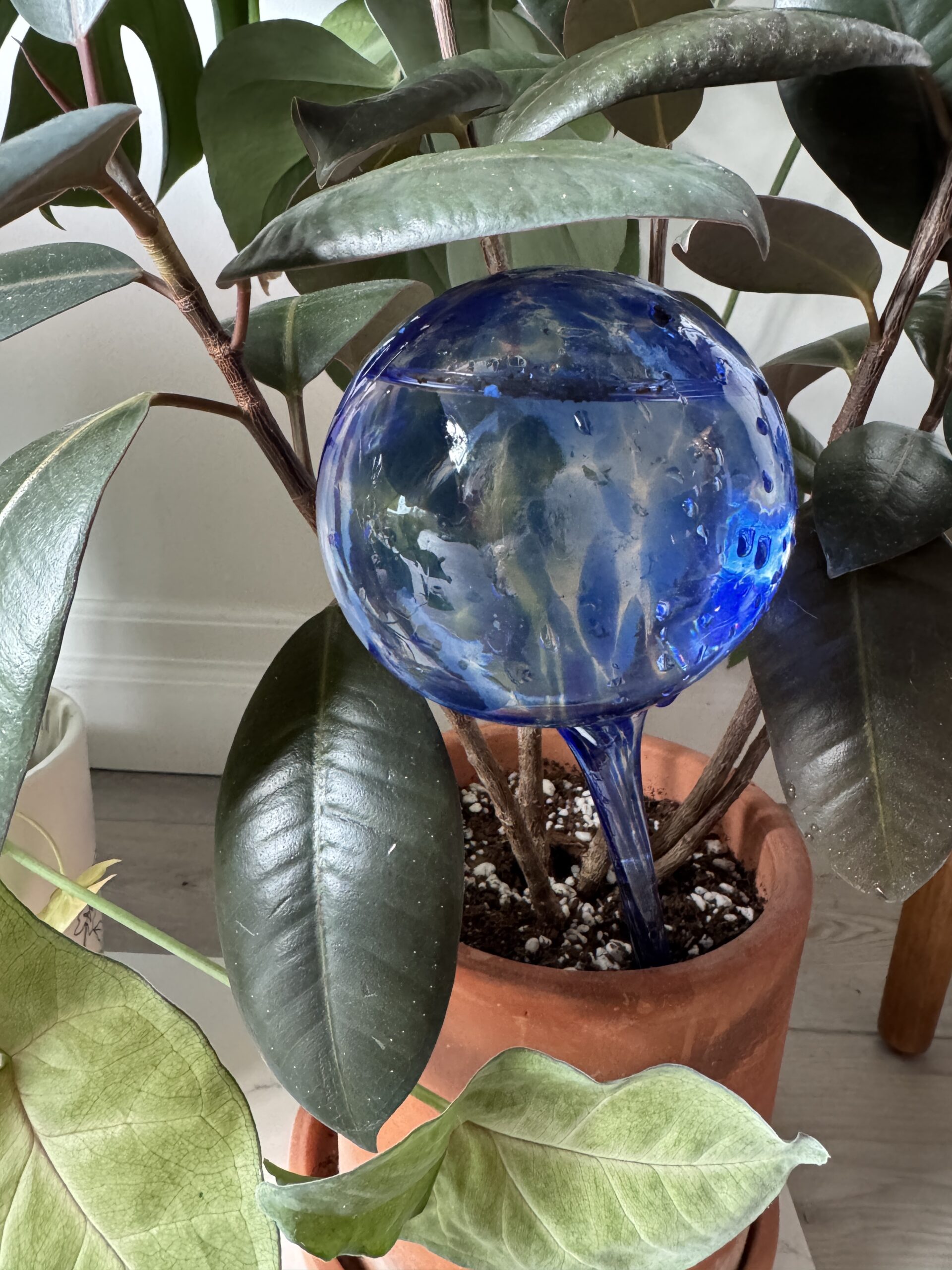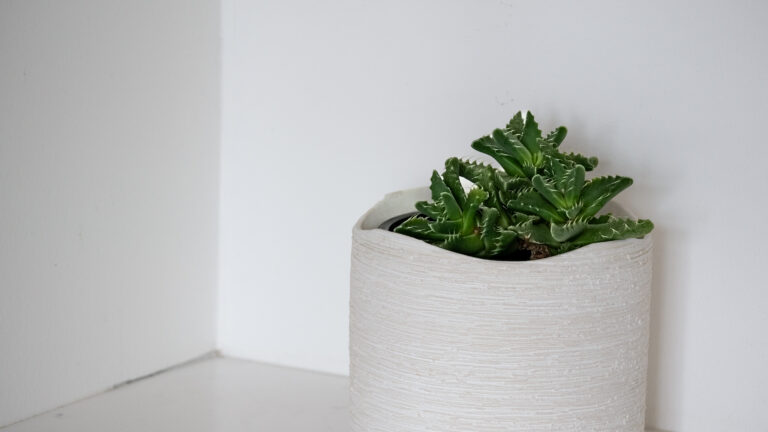The Thanksgiving Cactus (or Holiday Cactus) is a popular holiday plant known for its vibrant, tubular blooms in the late fall. Unlike desert cacti, this species thrives in humid environments, and requires very specific care to bloom.
This guide is perfect for beginners, and covers everything from light and watering to troubleshooting common problems.
About Thanksgiving Cactus
Thanksgiving Cactus or Schlumbergera truncata is a member of the Cactaceae family and the Schlumbergera genus. It is native to Southeastern Brazil.
Schlumbergera truncata is referred to as the Thanksgiving Cactus because it starts to flowers around American Thanksgiving (November).
There are around 9 species of the cacti within the Schlumbergera genus.
Thanksgiving Cactus at a glance.
Thanksgiving Cactus Appearance and Growth Habits
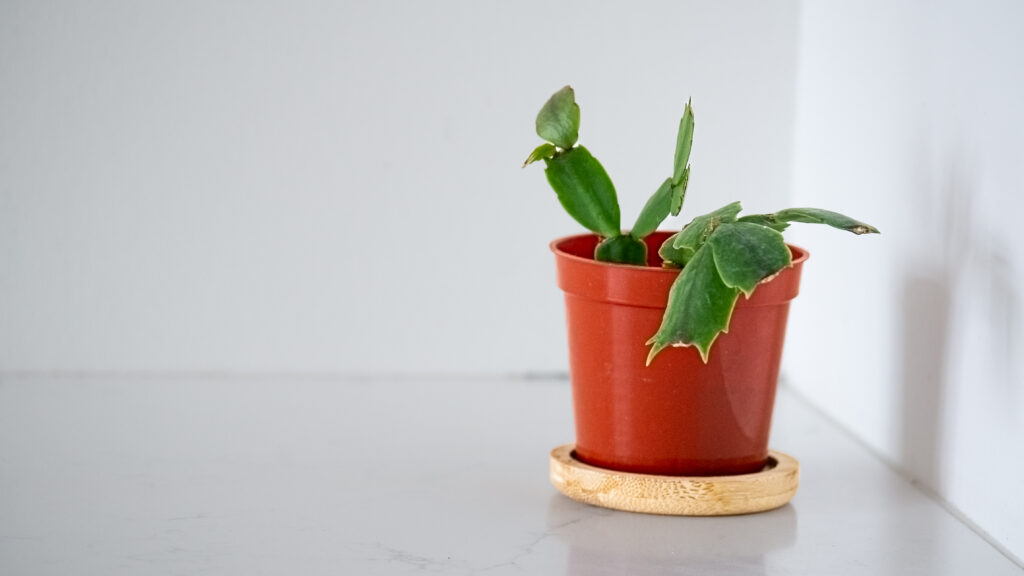
The Thanksgiving Cactus is green, almost crab like (hence one of its nicknames of crab cactus) with pointed, claw shaped projections along the edges of its leaves.
The leaves grow and connect to one another to form the crab like legs. During its blooming season, its flowers will grow from the tips of the stem.
Light Requirements for Thanksgiving Cactus
Schlumbergera truncata thrives in medium, indirect light in the summer, and brighter, indirect light during its blooming period in the fall and winter. They generally prefer to avoid direct sun as this can scorch their leaves.
They need 12-14 hours of darkness in the fall for 6 weeks to trigger blooming.
Where To Place Thanksgiving Cactus In Your HoMe
The ideal place for a Schlumbergera truncata in your home would be an East facing window. However, I keep mine near a Southwest facing window in the fall/winter (when the days are shorter-I live in Canada), and in the summer I move my Schlumbergera to the middle of the room of my southwest facing window in the summer.
Ideal Temperature and Humidity for Thanksgiving Cactus
Schlumbergera truncata prefers a temperature between 15 to 20 degrees celsius.
They are also happy with average household humidity levels (40-60%) and don’t need to be near a humidifier, but they do need to be in a room with a humidifier (if your household humidity isn’t at least 40%).
I still keep my Thanksgiving Cactus in a room with my Levoit Humidfier. Since I live in Canada the winters can be dry and the humidity can drop below 30%.
Growth Rate and Size of Thanksgiving Cactus
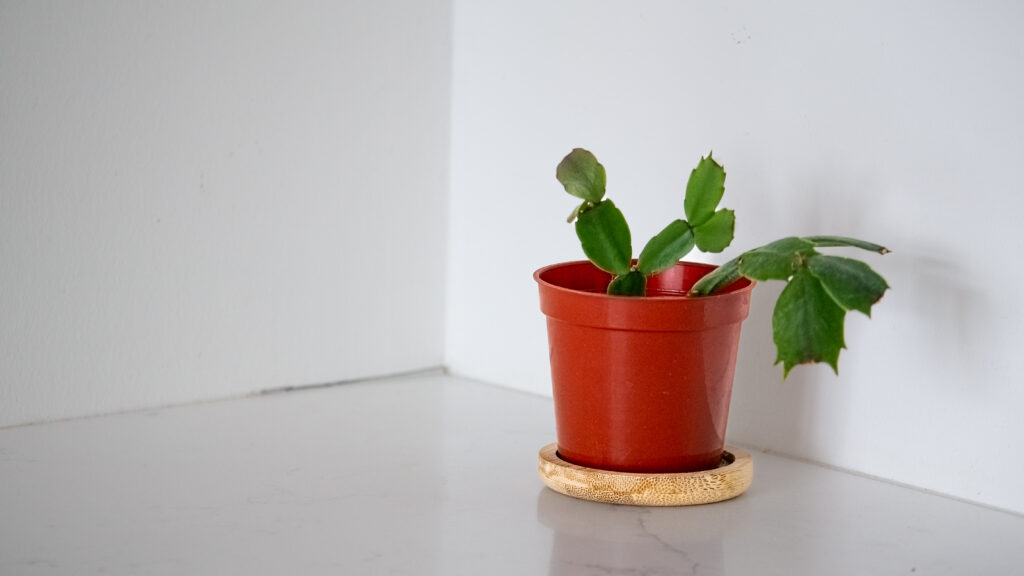
On average, Schlumbergera truncata can grow up to 1 ft long and 1 ft wide indoors. New foliage grows from one leaf to the other in a branching format.
Small leaves will erupt from the ends of other leaves and continue to build out the chain of leaves. The new leaves are a more vibrant green, with a bit of a reddish, purply edge.
The new leaf darkens as it reaches its full size.
To encourage growth (and general nutrition), you should fertilize your holiday cactus. Apply a balanced liquid fertilizer (10-10-10) diluted to half strength every 2 weeks from spring to early fall. Stop fertilizing during its dormancy (late fall/winter) to avoid stressing the plant.
Repotting Holiday Cactus
Cacti like to be snug in their pots. You will know your Schlumbergera truncata is ready to be repotted when the roots are growing out of the bottom of the drainage holes of its nursing pot.
A general rule of thumb is to pot up 2″ from its current pot size. If you put it in too big of a pot, its likely your plant will end up with root rot (a common cause-if not the most common cause of plant deaths).
To help you with repotting plants (which can be stressful), I’ve created a guide on everything you will need to repot your plant, and to minimize the stress of the plant during repotting (transplant shock), and the human repotters stress too.
Thanksgiving Cactus Blooms – What to Expect
Many people buy this cactus for its flowering capabilities. The Thanksgiving Cactus flowers from November to March in the right conditions.
To encourage flowering, you will have to expose your cactus to colder temperatures combined with shorter days. You can do so by placing your Holiday Cactus outdoors in the early fall. My grandma just had hers in a windowsill, but still inside and hers seemed to bloom every year.
The flowers can be red, orange, white, or pink, and last for up to 8 weeks. After the blooming period, your plant will need rest and less water.
How to Propagate Thanksgiving Cactus: Water & Soil
The easiest way to start a new Holiday Cactus is by stem cuttings. Choose a segment of 2-3 healthy looking leaves and remove them from the cactus using sterilized shears or scissors.
You can either water propagate or soil propagate. I’ve done both methods, and had better success with water propagation
Water Propagation
Take the cutting, and place them in your water vessel (I like propagation stations, but you can use a jar, vase, glass-anything that can hold water really). For my Thanksgiving Cactus, I used a small jar.
If the water starts to get murky, you will want to change out the water and put the plant back into fresh water. Otherwise your cutting will potentially rot, and the plant won’t root.
After the plant roots, and the roots are stable enough, plant your cutting cutting into soil, and water it.
Soil Propagation
Take the cutting and set it aside in a cool, dry location for 24 hours. Your cutting needs to callous over.
After your cutting has calloused over, put it directly into a planter with drainage holes, and well draining soil. Water your cutting and move it to a place where it can receive bright, indirect light.
You won’t be able to see if the plant is rooting in the soil, but if the plant eventually dies, you know it didn’t root successfully.
Remember, patience is key with propagation. Give your new cactus time to settle into its environment. Once you see new growth, you know your plant is well established.
Watering Thanksgiving Cactus: Schedule and Tips
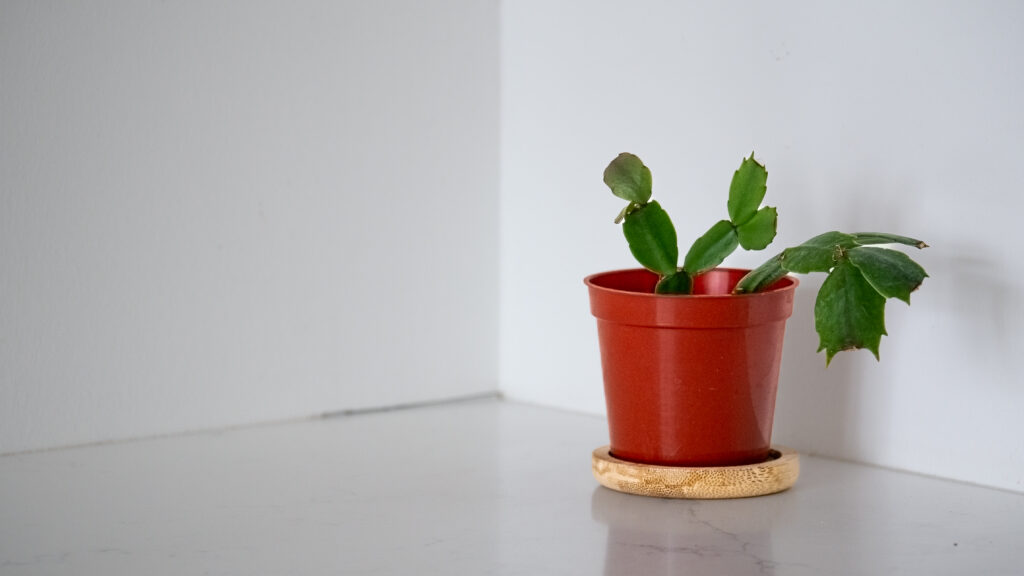
Schlumbergera truncata likes to be watered when half dry (likely once a week). They don’t like to fully dry out.
To determine if your plant needs water, you can stick your finger in the soil (1 to 2 inches) and if it is dry, its ready for water! If you don’t want to get your hands dirty, you can try a moisture meter.
I typically bottom water my Holiday Cactus through the drainage hole of the pot on a base tray. It’s the easiest way to know if your Holiday Cactus is thirsty or not. Overwatering can lead to fungus gnats, root rot, or the death of your plant.
You can top water, but it’s best to do so in a pot with drainage until water is flowing out of the hole. If your pot doesn’t have drainage holes, you might accidentally overwater your plant.
You should top water from time to time to make sure any built up minerals can wash through the plant. The water should flow out of the bottom of the drainage holes.

If you are going away on vacation, and worried about how to keep your plants alive while you are travelling, check-out my tips on 3 ways to keep your plant alive while on vacation.
Common Pests and Problems for Thanksgiving Cactus
This cactus can face the following pests and problems.
Pests
- Mealy Bugs: these look like little white cotton balls on the Schlumbergera truncata. You can remove these with your fingers if you catch them early enough, but I would use a cotton swab with a drop of Isopropyl alcohol and try to scrape them off the stem.
- Scale: Scale are small, brownish, round or oval insects that attach themselves to the leaves or stems of the plant. They are hard to notice as they appear like a growth or bump on the plant. Scale can cause yellowing, wilting, and weakened growth. Removing scale from a plant is tedious. You can remove scale with a cotton swab dipped in rubbing alcohol, using insecticidal soap or neem oil.
- Aphids: Aphids are small, insects that cluster under leaves and stems of the Schlumbergera truncata. They can appear white, brown, black, gray, light green or yellow. If you see leaf changes such as discolouration or wilting, this can be a sign of aphids. You should be able to spray them off with a strong stream of water or using insecticidal soap.
- Spider Mites: If spider mites have taken to your Thanksgiving Cactus, spray them with a mixture of neem oil, dish soap and water (or you can buy an insecticidal soap). I repeat this about once or twice a week (depending on the severity of infestation) for about a month. It’s also good to do this preventatively once a month or so. You will know you have spider mites if you see webbing and leaf damage. Learn how to eradicate Spider Mites.
- Fungus gnats: Spray the Thanksgiving Cactus with a mixture of neem oil, dish soap and water. I also let the soil dry out and add dryer sheets on top of the soil so the gnats can’t sense the moisture on the soil. You can also use yellow sticky traps to catch the gnats.
Other Common Problems for Thanksgiving Cactus
- Overwatering: Root rot happens from overwatering your plant with insufficient drainage. You can improve the drainage of your plant by ensuring your plant is potted in a planter with a drainage hole and using a well draining soil (something with a decent amount of perlite). You can also end up with fungus gnats or fungal disease from overwatering.
- Yellowing Leaves: This is likely an overwatering issue, but it can also indicate too much sunlight. If the soil is very wet and has not dried up for days, the yellowing is likely from overwatering.
- Underwatering: Even though plants prefer to be underwatered over overwatered, you still have to remember to water it on a consistent schedule. Signs of underwatering an include leaves becoming shrivelled, discoloured or dry.
- Drooping Leaves: Your plant is likely thirsty. Just give it a little water and it should be as good as new.
- No Flowers: If your Thanksgiving Cactus bloomed last year, it’s possible it won’t bloom this year. It also needs very specific conditions to bloom indoors. If you want to encourage flowering, you can try to put it outside at the beginning of fall, when the days are getting shorter.
- Flower Buds Falling Off: This can happen if your Holiday Cactus is exposed to drastic temperature changes during its flowering period. Ensure the conditions for your cactus remain consistent during its flowering period.
Toxicity of Thanksgiving Cactus to Humans and Pets
Thanksgiving Cactus are typically not toxic to touch or consume, however some people may experience allergic reactions if they ingest it.
Cats may have reactions if they eat the plant, but that’s due to fibrous parts leading to blockage in the intestines vs. toxicity.
Thanksgiving Cactus Quick Care Guide
| Scientific Name | Schlumbergera truncata |
| Nickname | Thanksgiving Cactus, Holiday Cactus, false Cristmas Cactus, Winter Cactus |
| Origins | Southeastern Brazil |
| Light | Indirect light in summer and brighter indirect light in colder months |
| Temperature | 15-20 degrees celsius (preferred) |
| Humidity | Average humidity (40-60%) |
| Height | Up to 1 foot |
| Blooms | Yes |
| Propagate | Stem cuttings |
| Water Frequency | When half-dry (likely once a week). They don’t like to dry out. |
| Pests | Spider Mites, Aphids, Mealybugs, Scale, Fungus Gnats |
| Common Problems | Overwatering (root rot), underwatering (yellowing leaves), no blooms, flower buds falling off, inconsistent |
| Toxicity | Non-Toxic |
References
Below is a list of external sources I consulted while writing this post. This post is a mixture of my own experiences, and the external sources listed below:
The Spruce – Thanksgiving Cactus
Wikipedia – Schlumbergera Truncata
Iowa State University – Thanksgiving, Christmas or Easter Cactus
Greg App – False Christmas Cactus Toxicity
Gardenia – Schlumbergera Truncata

